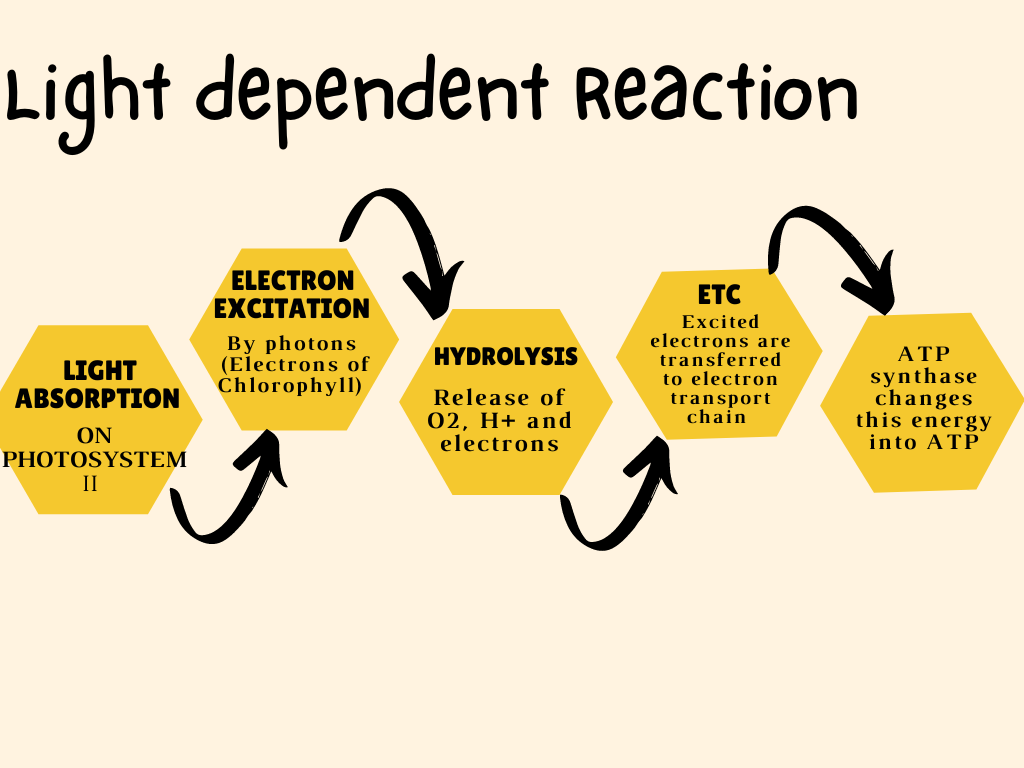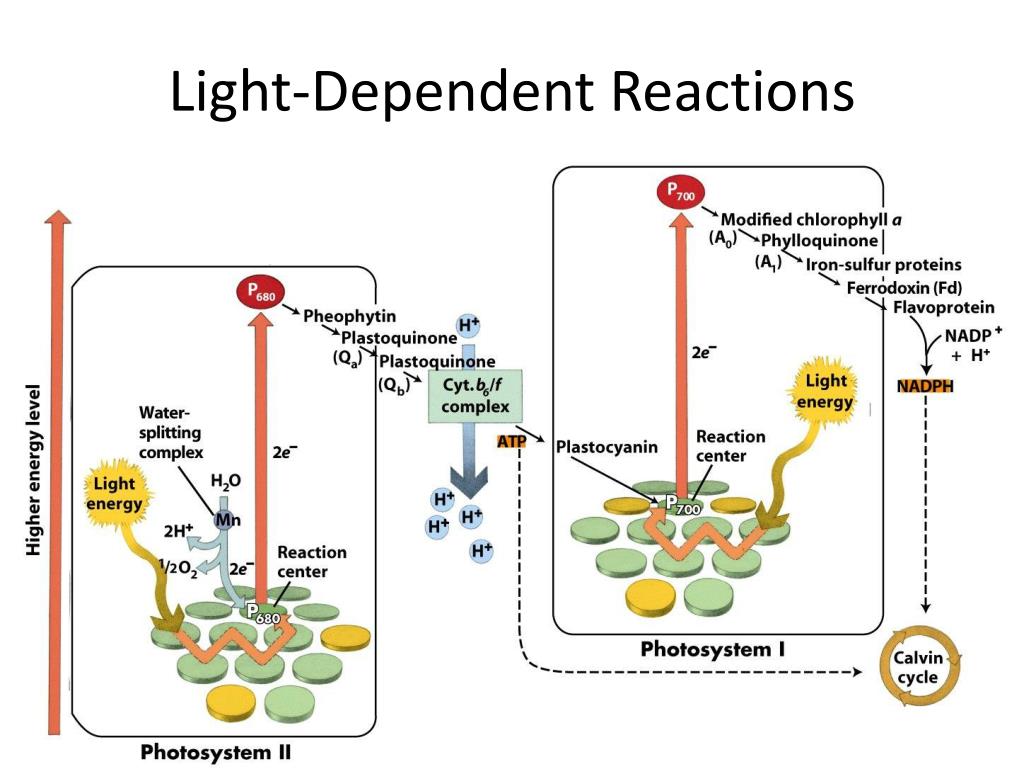Photosynthesis is a vital process that sustains life on Earth, and understanding the order of light-dependent reactions is crucial to grasp its mechanics. These reactions, powered by sunlight, are the first stage of photosynthesis and occur within the thylakoid membranes of chloroplasts. By delving into this process, we can uncover how energy from the sun is converted into chemical energy, which fuels life on our planet.
The light-dependent reactions of photosynthesis are responsible for generating ATP and NADPH, essential energy carriers for the subsequent stages of photosynthesis. These processes are complex but fascinating, involving intricate molecular interactions and the transfer of electrons through specific pathways.
In this article, we will explore the order of light-dependent reactions in detail, breaking down each step and explaining the mechanisms involved. Whether you're a student, researcher, or simply curious about how plants harness sunlight, this guide will provide valuable insights into one of nature's most remarkable processes.
Read also:Gianluca Cugnetto The Rise Of A Tech Visionary
Table of Contents
- Introduction to Light-Dependent Reactions
- Overview of Photosynthesis
- Role of Chloroplasts in Photosynthesis
- Light Absorption and Photosystems
- Electron Transport Chain in Light-Dependent Reactions
- ATP Generation Through Photophosphorylation
- NADPH Production
- Cyclic vs. Non-Cyclic Photophosphorylation
- Importance of Light-Dependent Reactions
- Conclusion and Call to Action
Introduction to Light-Dependent Reactions
The light-dependent reactions are the first phase of photosynthesis and occur exclusively in the presence of sunlight. These reactions take place within the thylakoid membranes of chloroplasts and involve the absorption of light energy by pigments like chlorophyll. The process ultimately leads to the production of ATP and NADPH, which are crucial for the subsequent light-independent reactions (Calvin Cycle).
Understanding the order of light-dependent reactions is essential because it explains how solar energy is converted into chemical energy. This energy conversion process involves several steps, including the excitation of electrons, their transfer through an electron transport chain, and the generation of ATP through photophosphorylation.
Overview of Photosynthesis
What is Photosynthesis?
Photosynthesis is the biological process by which green plants, algae, and some bacteria convert light energy into chemical energy stored in glucose molecules. It is a two-stage process: the light-dependent reactions and the light-independent reactions (Calvin Cycle).
- Light-dependent reactions: Occur in the thylakoid membranes and produce ATP and NADPH.
- Light-independent reactions (Calvin Cycle): Occur in the stroma of chloroplasts and use ATP and NADPH to synthesize glucose.
Key Components of Photosynthesis
Photosynthesis relies on several key components, including:
- Chlorophyll: The primary pigment responsible for capturing light energy.
- Thylakoid membranes: Structures where the light-dependent reactions occur.
- Stroma: The site of the Calvin Cycle, where glucose is synthesized.
Role of Chloroplasts in Photosynthesis
Chloroplasts are organelles found in plant cells and algae that are responsible for carrying out photosynthesis. These structures contain thylakoid membranes stacked into grana, where the light-dependent reactions take place. The stroma, the fluid-filled space surrounding the thylakoids, is the site of the Calvin Cycle.
Chloroplasts are unique because they contain their own DNA and ribosomes, allowing them to produce some of the proteins necessary for photosynthesis. This evolutionary adaptation highlights the importance of chloroplasts in the survival of photosynthetic organisms.
Read also:Mackenyus Wife Name A Comprehensive Guide To The Life And Love Of The Rising Star
Light Absorption and Photosystems
How Light is Absorbed?
Light absorption is the first step in the light-dependent reactions. Chlorophyll and other accessory pigments absorb photons of light, which excite electrons to higher energy states. This excitation initiates the flow of electrons through the electron transport chain.
Photosystems: PS I and PS II
Photosystems are protein complexes embedded in the thylakoid membranes that capture light energy. There are two main photosystems involved in the light-dependent reactions:
- Photosystem II (PS II): Responsible for splitting water molecules and releasing oxygen as a byproduct.
- Photosystem I (PS I): Involved in the final stages of electron transfer and the production of NADPH.
Electron Transport Chain in Light-Dependent Reactions
The electron transport chain (ETC) is a series of protein complexes and mobile carriers that facilitate the transfer of electrons during the light-dependent reactions. Electrons excited by light energy are passed through the chain, releasing energy that is used to pump protons across the thylakoid membrane and establish a proton gradient.
This gradient drives the synthesis of ATP through a process called chemiosmosis, where protons flow back into the stroma through ATP synthase enzymes.
ATP Generation Through Photophosphorylation
Photophosphorylation is the process by which ATP is generated during the light-dependent reactions. As protons accumulate in the thylakoid lumen, they create a proton gradient that drives ATP synthase enzymes to produce ATP. This ATP is then used in the Calvin Cycle to power the synthesis of glucose.
There are two types of photophosphorylation:
- Cyclic photophosphorylation: Involves only Photosystem I and generates ATP without producing oxygen or NADPH.
- Non-cyclic photophosphorylation: Involves both Photosystem I and Photosystem II and produces ATP, NADPH, and oxygen.
NADPH Production
NADPH is a high-energy electron carrier that is essential for the Calvin Cycle. It is produced during the final stages of the light-dependent reactions when electrons from Photosystem I are transferred to NADP+ to form NADPH. This molecule carries electrons to the stroma, where they are used to reduce carbon dioxide into glucose.
Cyclic vs. Non-Cyclic Photophosphorylation
Cyclic Photophosphorylation
Cyclic photophosphorylation is a process that generates ATP without producing oxygen or NADPH. It involves only Photosystem I and occurs when the plant requires additional ATP but does not need more NADPH. This pathway is particularly important under certain environmental conditions, such as low light intensity.
Non-Cyclic Photophosphorylation
Non-cyclic photophosphorylation is the primary pathway of the light-dependent reactions. It involves both Photosystem I and Photosystem II and results in the production of ATP, NADPH, and oxygen. This pathway is essential for the complete functioning of photosynthesis and the synthesis of glucose.
Importance of Light-Dependent Reactions
The light-dependent reactions are critical for the survival of photosynthetic organisms and the entire ecosystem. By converting solar energy into chemical energy, these reactions provide the energy necessary for the synthesis of glucose and other organic compounds. Additionally, the oxygen released during these reactions is a vital byproduct that supports aerobic life on Earth.
Understanding the order of light-dependent reactions is not only important for scientific research but also for applications in agriculture, renewable energy, and environmental conservation. By studying these processes, scientists can develop strategies to improve crop yields, create biofuels, and mitigate the effects of climate change.
Conclusion and Call to Action
In conclusion, the order of light-dependent reactions in photosynthesis is a fascinating and intricate process that sustains life on our planet. By absorbing light energy and converting it into chemical energy, these reactions produce ATP and NADPH, which are essential for the synthesis of glucose in the Calvin Cycle. Understanding the mechanics of these reactions can deepen our appreciation for the natural world and inspire innovative solutions to global challenges.
We invite you to explore further by reading related articles on our website or sharing this guide with others who may benefit from it. If you have any questions or insights, feel free to leave a comment below. Together, we can continue to learn and grow in our understanding of the wonders of nature!
Data Sources:
- Alberts, B., Johnson, A., Lewis, J., Raff, M., Roberts, K., & Walter, P. (2002). Molecular Biology of the Cell (4th ed.). Garland Science.
- Lehninger, A. L., Nelson, D. L., & Cox, M. M. (2008). Lehninger Principles of Biochemistry (5th ed.). W. H. Freeman.
- Stern, K. L., Bidlack, J. E., & Jansky, S. H. (2018). Introductory Plant Biology (14th ed.). McGraw-Hill Education.


